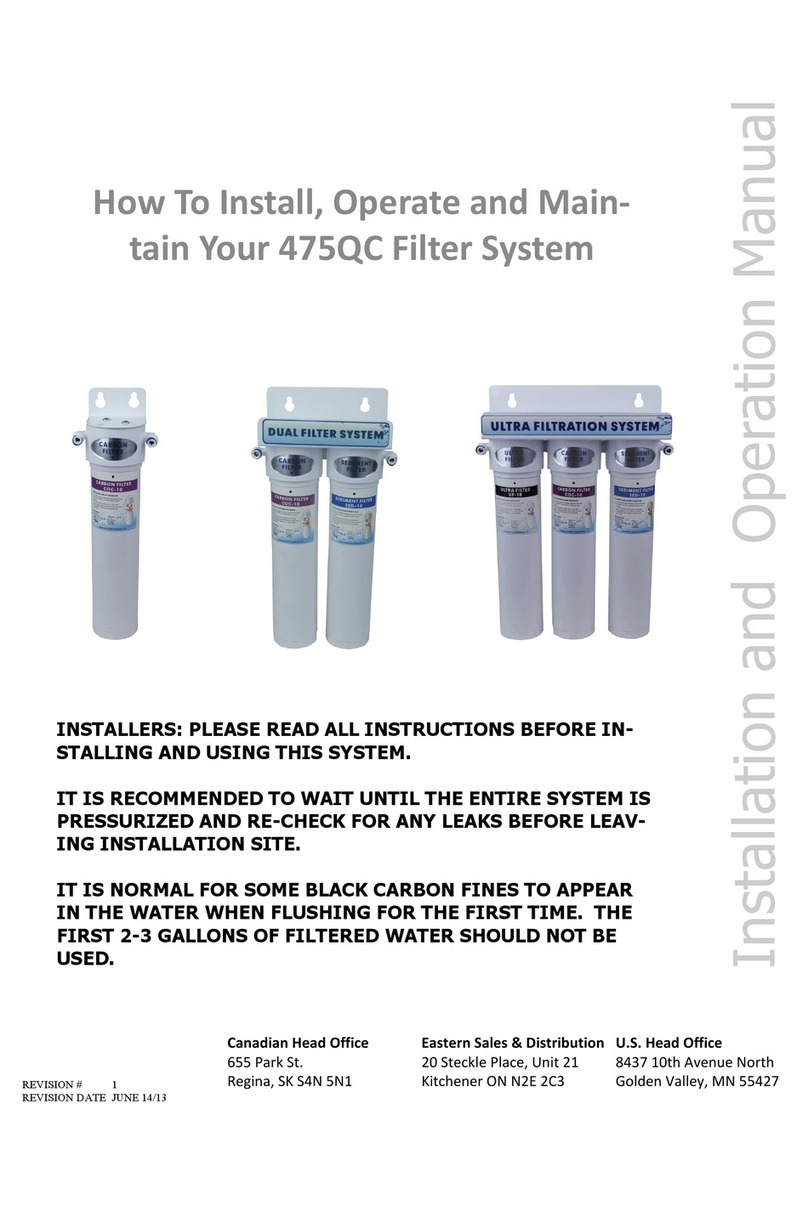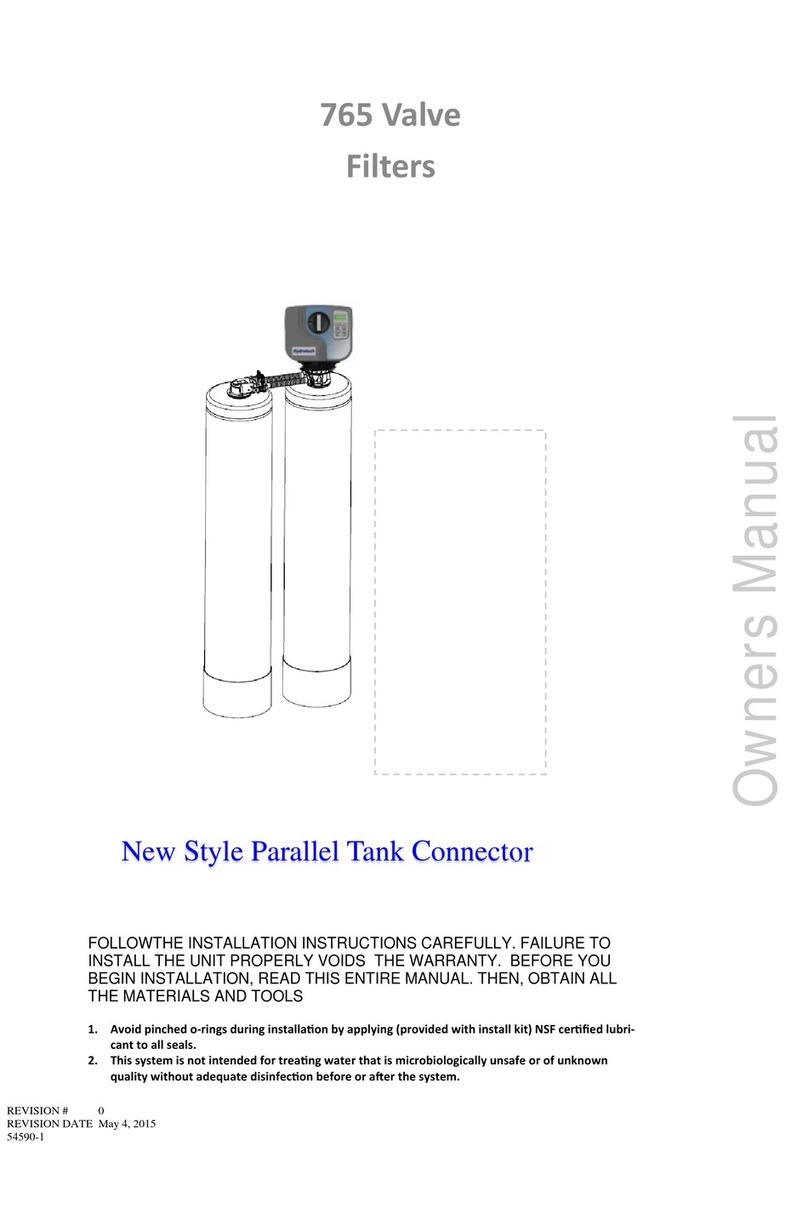
Your Reverse Osmosis System has been factory tested to
ensure proper operation. The following periodic
maintenance is recommended so your system will provide
years of trouble-free service:
Disposable Filters Change Schedule
Sediment (SED-10) Every 3-6 months
Carbon (CB-10) Every 6-12 months
R/O membrane Every 24-36 months
Components
The following components make up your Reverse Osmosis
Drinking Water System:
1. Pre-filter (Sediment SED-10) removes larger particles
such as sand, silt, and rust.
2. Pre-filter (Carbon COC-10) removes chlorine in the
feed water to protect the reverse osmosis membrane.
3. Reverse Osmosis Membrane reduces dissolved
minerals, metals and salts. During the process,
harmful compounds are separated by the membrane
and the reject water goes to waste (drain).
4. Post-filter (Carbon COC-10) is provided for a final
“polish” to provide great tasting drinking water.
5. Storage tank holds filtered water, ready for use.
6. Automatic shut-off valve senses when the storage
tank is full and closes the water supply to conserve
water.
7. Faucet used to dispense RO water when needed.
8. Feed water valve is connected to the cold water line
to supply water to the RO system.
9. Waste water saddle valve is connected to the drain to
remove reject water from the RO system.
Tools
The following tools may be necessary, depending on each
particular installation:
3/8`` variable speed electric drill; 1/8”, ¼”, ½” bits
Center punch and hammer
Phillips head and flat blade screwdrivers
Adjustable wrench
Teflon tape
Plastic tube cutter
System Location
Your R/O system may be installed under a sink, in a
basement or other location, depending on available space.
Do not install unit where temperatures fall below freezing;
otherwise, damage will result. Connection to an icemaker
should also be considered for optimum performance.
Guidelines for component placement are as follows:
Faucet should be placed near the sink where
drinking/cooking water is normally required. A 2`` flat
surface is required to mount the faucet if an existing hole for
a second faucet is not available. The thickness of the
mounting surface should not exceed 1-1/4``.
Storage tank may be placed where it is convenient, within
ten feet of the faucet. Under the sink or in a nearby cabinet
are excellent choices. If tank is located further than ten feet
from the faucet, use 1/2`` tubing to reduce pressure drop.
Full tanks may weigh more than thirty pounds, so a sturdy
shelf is required.
RO unit may be mounted on either side of the sink, in a
cabinet or heated basement, with nearby access to a
potable, cold line.
Feed water connection is accomplished with a feed water
adaptor or self-piercing feed water saddle valve. Locate this
assembly as close to the R/O unit as possible. Connect to a
potable, cold water supply line only.
NOTE: Softened water is preferred since it will extend the
life of your R/O membrane.
Drain connection is accomplished using a waste water
saddle valve which is designed to fit around a standard 1-
1/2`` OD drain pipe. The drain saddle valve should always be
installed above (before) the trap and on the vertical or
horizontal tailpiece. Refer to Figure 1
NOTE: Some local plumbing codes may require an air gap
drain connection.
Figure 1. Installation Example
#1#2
#3
#4 #5
#7
#8
#9
#6
2
Installation Instructions
Reverse Osmosis Drinking Water System



























